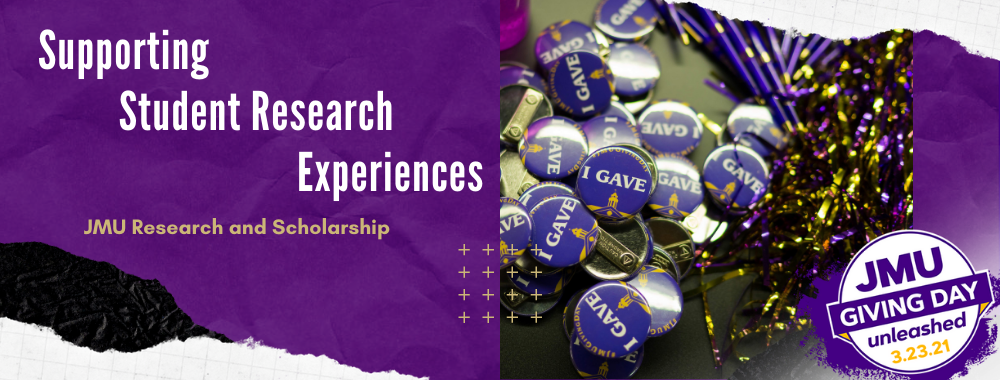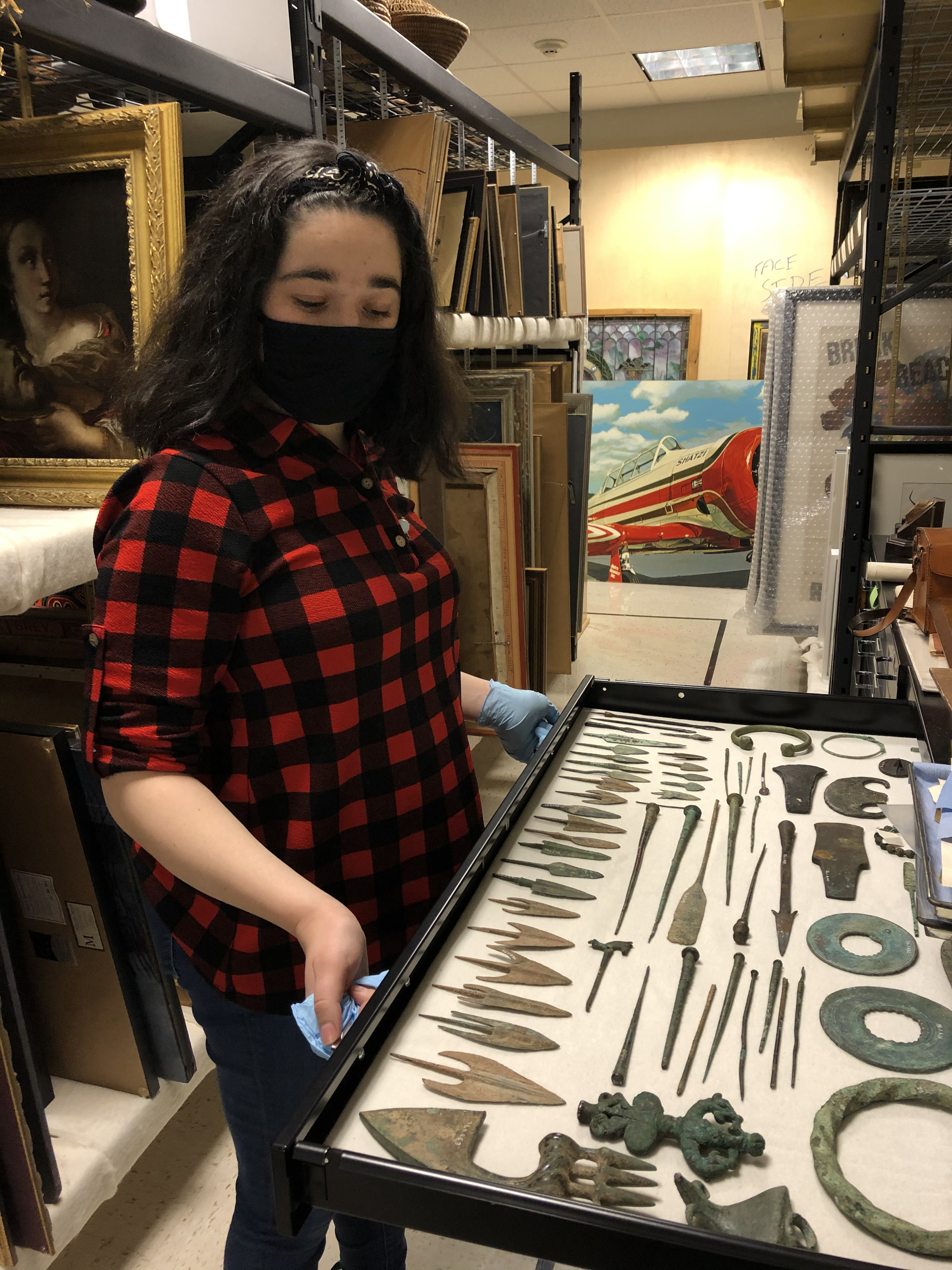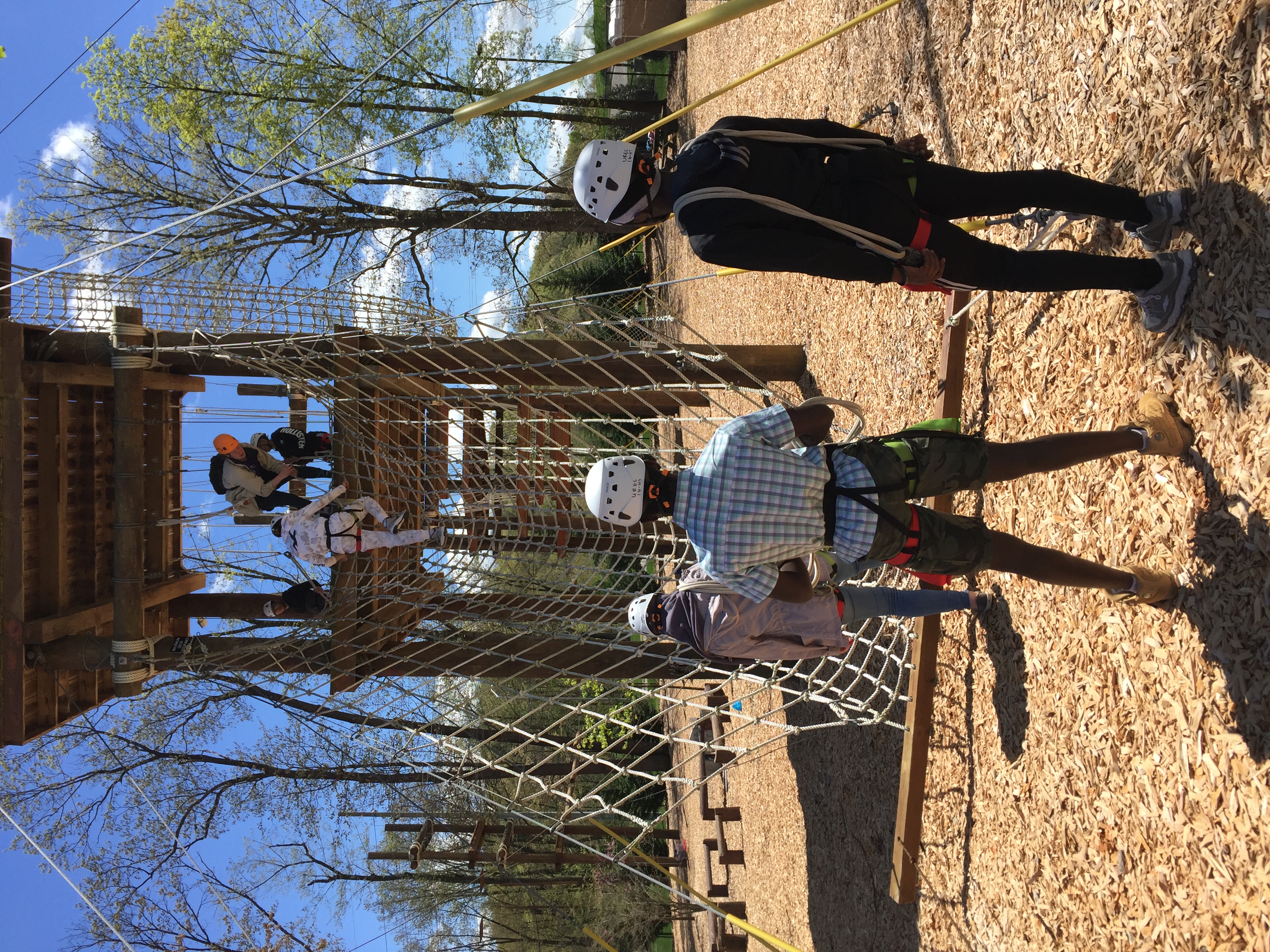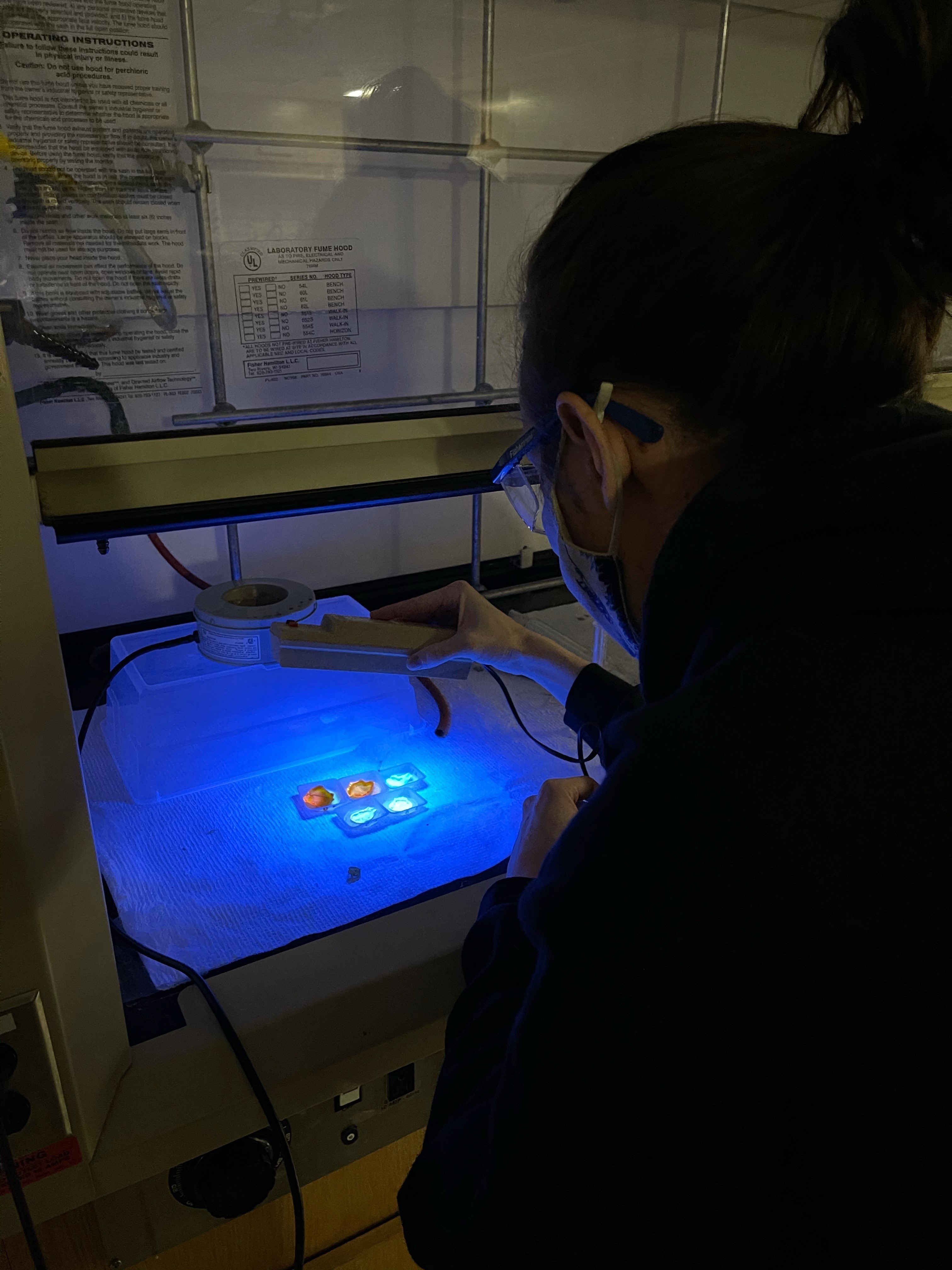
The Office of Research and Scholarship (R&S) has identified supporting student research experiences as our 2021 Giving Day priority on March 23rd. Your contribution will support the R&S Summer Student Research and Scholarship Program, a recently launched effort providing funds for students to engage in research experiences mentored by faculty and staff from JMU’s institutes and centers. Below are brief descriptions of the three inaugural projects (set to take place during summer 2021), and your donation will directly support these projects.
Give Now to Support these Projects
(The above link will take you to the JMU Giving Day site. Select 'Give Now' and select ‘Research and Scholarship fund’ to support these projects.)
Giving Day 2021 Projects

The Madison Art Collection (MAC) is an encyclopedic, permanent collection of over 35,000 objects from a vast array of cultures, time periods, and mediums. The art of African cultures from the eighteenth- to twentieth-century comprise a core component and are representative of the diverse cultures of the continent. This collaborative project between the Cohen Center for the Humanities (CCH) and the Madison Art Collection will support the work of a JMU graduate student intern in researching and digitizing the Madison Art Collection’s African cultural objects for viewing by, and engagement with, local, national, and international audiences.
Despite the strong holdings of the MAC, very little of the collection is accessible to visitors. The small size of the Lisanby Museum allows for only a limited percentage of the collection to be exhibited over the course of the year. In the wake of the COVID-19 pandemic, the infeasibility of this system is evident. To realize their full potential as scholarly and educational resources, the collection objects and information must be accessible on a digital platform.
The graduate student selected for this internship would be responsible for 1) ensuring the accuracy of the information associated with individual objects through thorough research, and 2) developing detailed research documents for each object (containing, but not limited to, information pertaining to cultural groups, materiality, and visual analysis), allowing for easy integration into MAC’s existing online resources.
The expected outcomes of this project are:
- Provide a student intern with the opportunity to engage in real world research under the mentorship of Dr. Klein (CCH Director) and Ms. Soenksen (MAC Director).
- Increase public accessibility to the Madison Art Collection at a time when physical access to the objects isn’t possible due to COVID, travel logistics, or both.
- Support the missions of both CCH and MAC. The mission of CCH is to “foster intellectual engagement, interdisciplinary collaboration and a strong sense of community for all graduate students.” MAC’s mission is “to foster an informed appreciation of the rich diversity of the human experience.”
- Provide additional positive exposure for both MAC and CCH. A collaboration such as this one, which provides public humanities engagement, illustrates ways in which CCH can play a role in advocating and advancing interdisciplinary humanities through strategic partnerships.

In February 2021, President Biden pledged to increase the annual refugee admissions cap to 125,000 in the 12-month period starting Oct. 1, 2021. Such an announcement is significant to the city of Harrisonburg, an official refugee resettlement site and one of the top per capita refugee destinations in the United States.
This summer, Research and Scholarship is sponsoring an opportunity for a team of two JMU student researchers to assist on a project to revitalize the Peer Leaders Program at Harrisonburg High School. The Peer Leaders Program provides services to recently-arrived students from refugee families, with the overall goal of reducing stress related to the transition to a new community and promoting success in school. After a year of COVID-related restrictions on activities and anticipating an increase in new refugee arrivals, the JMU students will collaborate on the project with organizations across JMU and the local community, including the Center for International Stabilization and Recovery (CISR), JMU’s Justice Studies Department, Church World Service and Harrisonburg City Public Schools. Through community-based field research and grassroots organizing, JMU students will contribute to refugee integration research and positively impact services for local high school students.

Americans produce almost 40 million tons of food waste a year. That means that a single person in the United States wastes approximately 219 pounds of food annually, while at the same time more than 1 in 8 Americans struggles with food insecurity. Additionally, as most wasted food ends up sealed in trash bags and discarded in landfills, the environmental impacts of food waste are quite considerable. Here, we propose a collaborative project between the Center for Material Science (CMS) and the Center for STEM Education and Outreach (CSEO) to address these issues. This is the ideal collaboration to tackle this complex issue from two sides. First by using material science research to design a biodegradable plastic wrap with a built-in food decomposition sensor. And secondly, by using the outcomes of this research to inform development of a novel and authentic STEM experience for high school students in our region. Effectively providing an opportunity for students to discover how material science research is being used to address social inequities like food insecurity and environmental waste.
Funding for this work will provide an undergraduate student with access to an exciting research area and an opportunity to participate in hands-on, faculty-mentored research. This student will gain experience in material science synthesis and characterization techniques. Additionally, their involvement in this research will deepen their understanding and foster development of scientific communication skills and STEM literacy by developing methods for breaking down the complexities of the research science for novice learners. Outcomes from this work will lead to future publications with undergraduate authors and student presentations both on the regional and national scale.
The goals of this project are:
- Optimize conditions for biopolymer film formation for outreach activities.
- Develop visibly responsive biopolymer thin films for volatile amine sensing.
- Develop a flexible materials module for the CSEO’s new outreach program.
